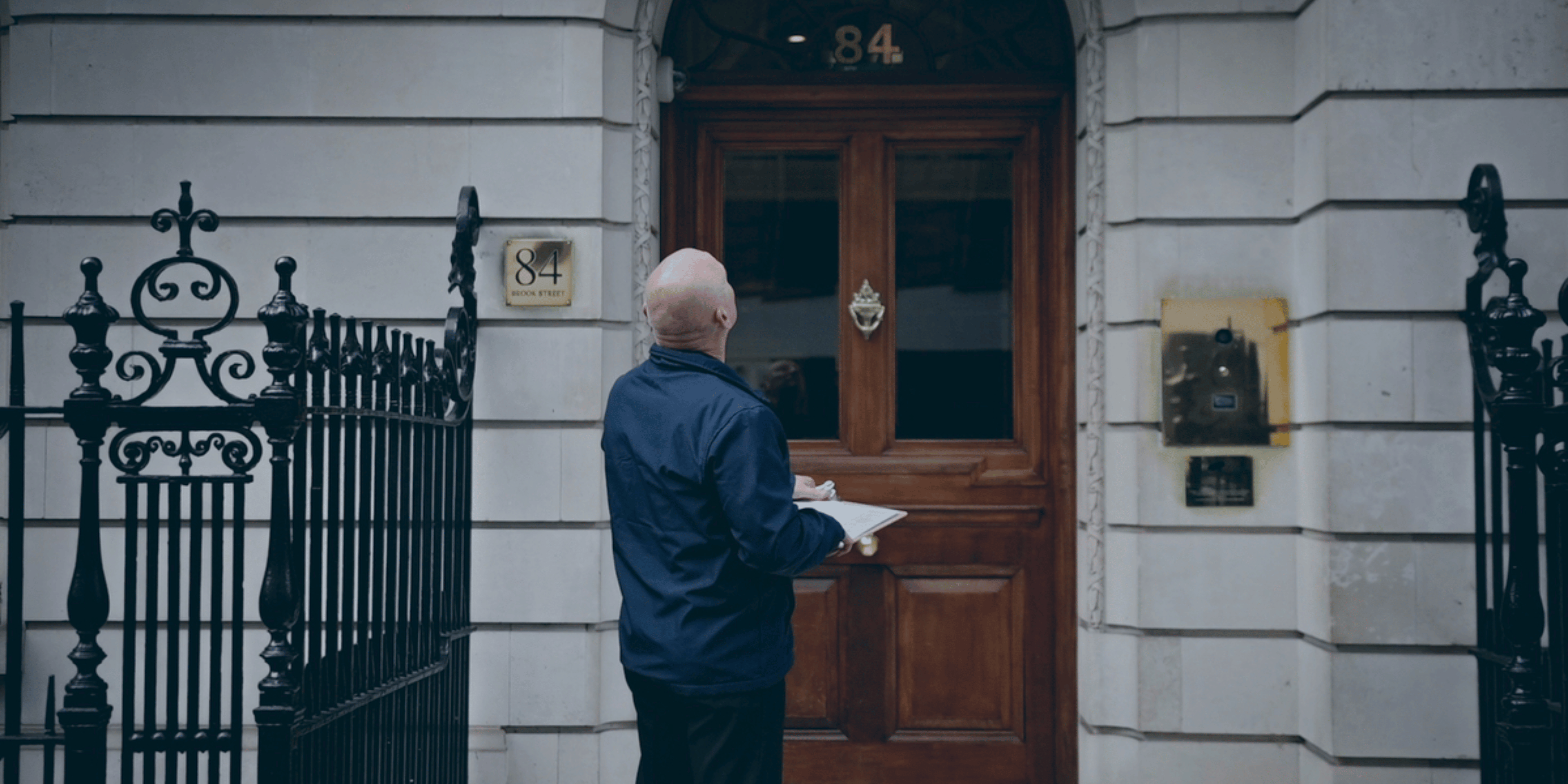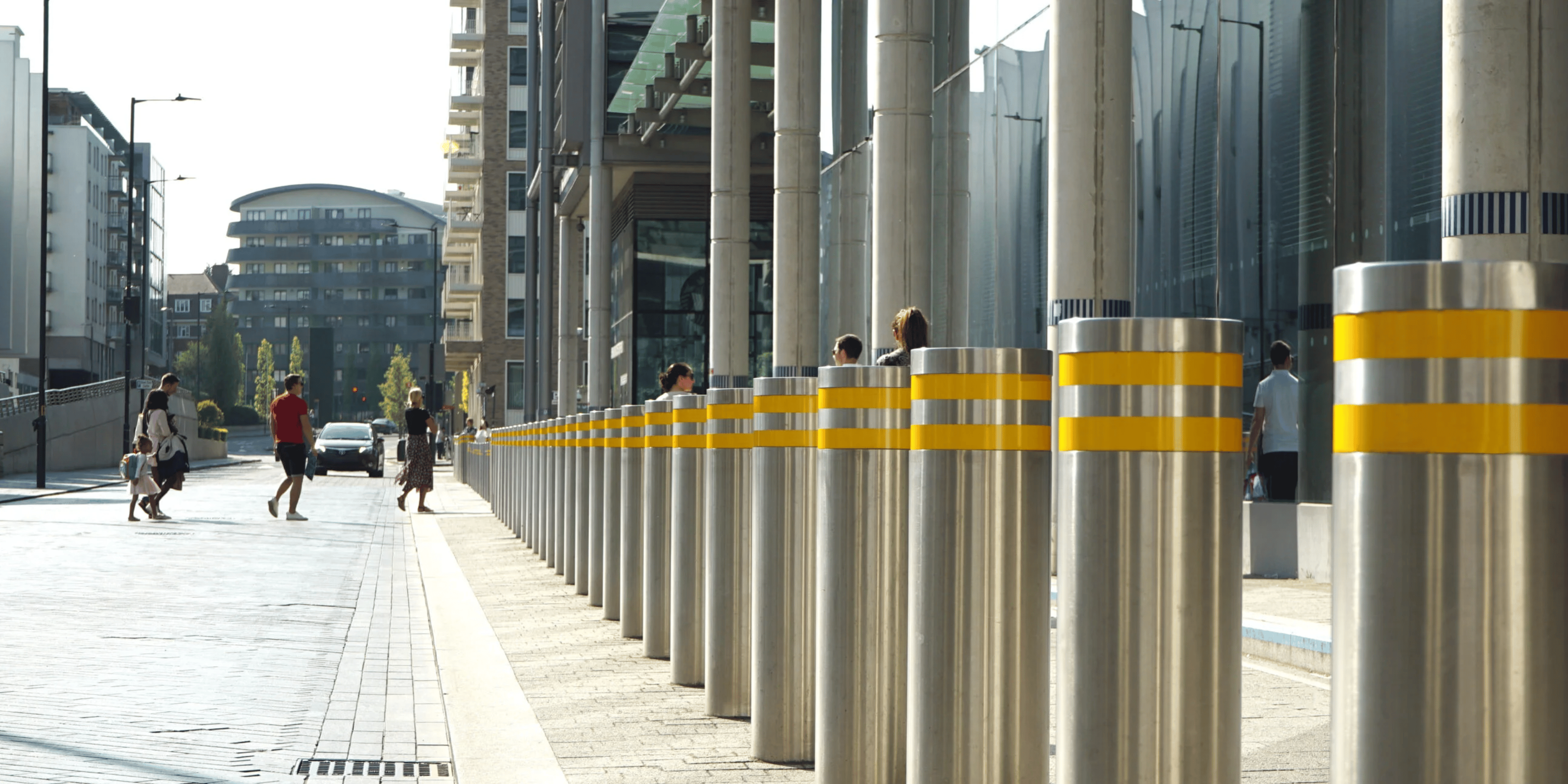
10 Ways AI CCTV Enhances Security for Construction Sites

Overview
AI CCTV significantly enhances security for construction sites by providing real-time monitoring, predictive threat detection, and automated alerts. These capabilities collectively improve safety and compliance, which are critical components of business resilience. The reality is that construction sites face numerous security challenges, and the integration of AI technology can mitigate these risks effectively.
Ignoring the potential threats can lead to severe financial, operational, and reputational consequences. For instance, construction theft costs UK businesses over £1m a week, underscoring the importance of proactive security measures. By identifying unsafe behaviours and managing crowd density, AI not only reduces incident rates but also fosters a proactive safety culture on construction projects.
In practise, Priority First stands out as a pragmatic solution provider. With over £1.6bn worth of assets secured and rapid response times, the firm demonstrates its commitment to safeguarding construction environments. Early investment in security technology, such as AI CCTV, is not merely an expense; it is a strategic move towards ensuring business continuity and protecting valuable resources.
The lesson is clear: by prioritising safety and compliance through advanced monitoring systems, construction projects can not only enhance their operational efficiency but also cultivate a culture of safety that protects both workers and assets.
Introduction
AI technology is transforming the construction industry, particularly concerning site security. As construction sites grow more complex and susceptible to risks, the integration of AI CCTV systems offers a significant opportunity to enhance both safety and operational efficiency. The reality is that construction theft costs UK businesses over £1m a week, highlighting a critical yet often underestimated business function. Ignoring these risks can lead to severe financial, operational, and reputational consequences.
In practise, construction managers must consider how to effectively leverage these advanced technologies to protect their assets while fostering a culture of safety and compliance on-site.
Priority First stands as a pragmatic solution, providing evidence-led strategies that not only address immediate security needs but also contribute to long-term business resilience.
Priority First AI CCTV: Enhancing Security for Construction Sites
Priority First Security Services employs advanced AI CCTV technology to significantly enhance safety on construction sites. These intelligent monitoring solutions deliver real-time oversight, meticulously documenting and analyzing activities to identify potential threats. The integration of AI CCTV enables automated alerts and swift responses, thereby strengthening the overall security framework of construction projects. For instance, AI CCTV systems can detect unsafe behaviors, such as employees failing to wear personal protective equipment (PPE), and quickly notify safety personnel, preventing incidents before they occur. Furthermore, these systems can track crowd density in real time, aiding in the management of safety risks associated with overcrowding on site.
Real-world applications underscore the effectiveness of AI in construction security. A notable example is BNI Coal, which implemented the WingtraOne drone for surveying, resulting in substantial improvements in operational efficiency and safety. By decreasing the necessity for surveyors to enter hazardous areas, the company mitigated risks while enhancing data accuracy. Security experts emphasize that AI's ability to analyze historical data supports predictive risk modeling, enabling project managers to anticipate vulnerabilities and implement preventive measures. This proactive approach not only safeguards assets but also on construction sites, ultimately leading to improved project outcomes.
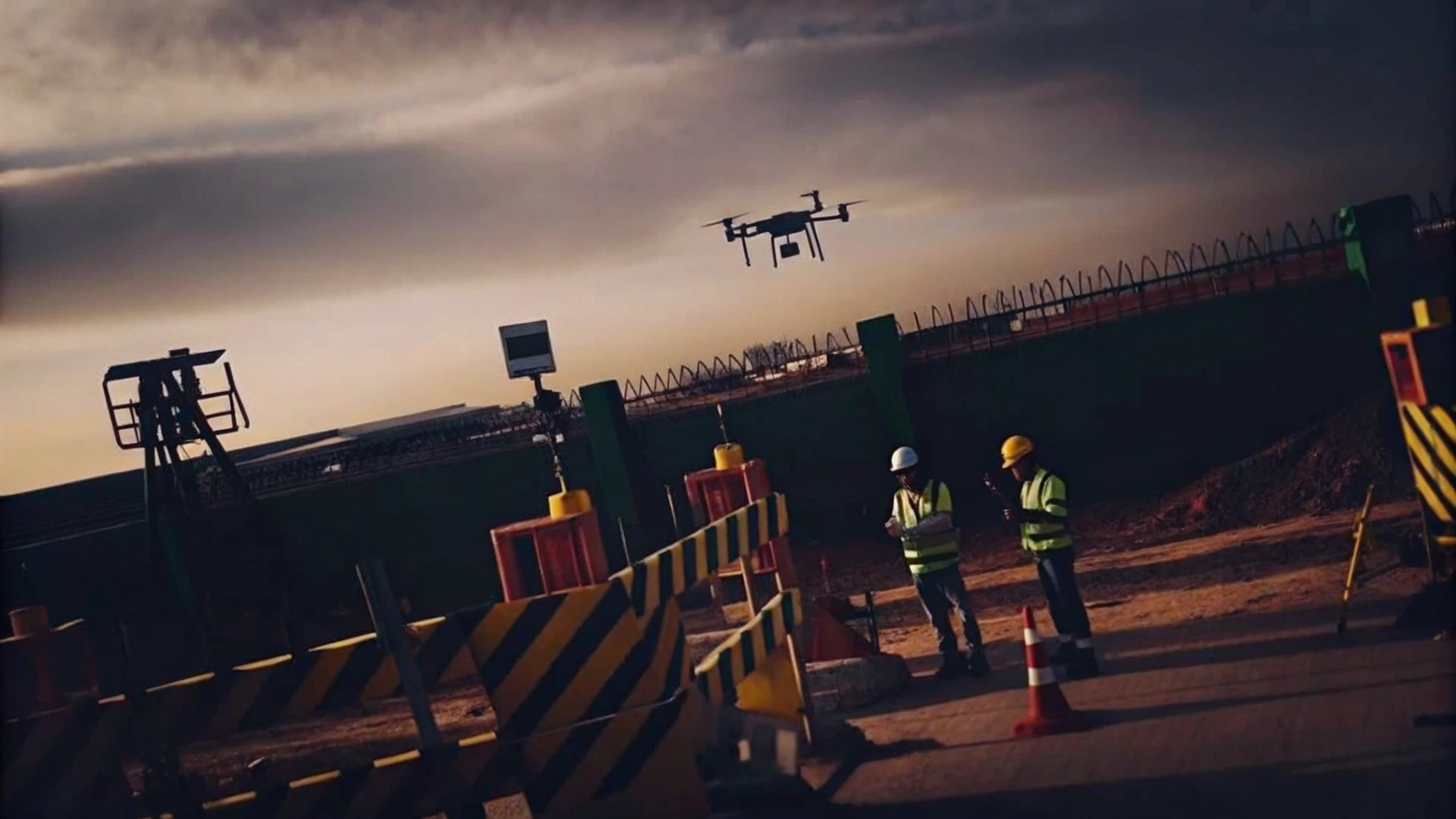
Real-Time Monitoring: Ensuring Safety and Compliance on Construction Sites
AI CCTV setups provide ongoing real-time observation of building sites and play a crucial role in ensuring adherence to safety regulations. These sophisticated systems are designed to identify hazardous practices and unauthorized entry, significantly reducing the likelihood of incidents. For instance, AI-powered cameras can autonomously monitor live video feeds, instantly alerting operators to potential hazards, such as workers not wearing personal protective equipment (PPE) or entering restricted areas. This proactive approach not only enhances safety but also mitigates the risk of associated with non-compliance.
In 2023, the U.K. Bureau of Labour Statistics reported 075 fatal occupational injuries, underscoring the urgent need for improved safety measures in the construction sector. AI CCTV surveillance setups directly tackle this challenge by providing automated notifications for compliance issues, ensuring that all staff adhere to established safety protocols. The integration of AI technology with existing security infrastructure allows for seamless monitoring without necessitating a complete system overhaul, thereby enhancing operational efficiency.
Moreover, the effectiveness of AI surveillance cameras in ensuring compliance is demonstrated through various case studies. For example, during the development of a multi-use facility in Chelsea, Priority First provided extensive surveillance monitoring alongside key holding and alarm response services. This integration not only maintained site safety but also ensured that operations ran smoothly amidst the complexities of mixed residential and commercial tenants. Construction sites employing AI monitoring have reported significant improvements in safety compliance rates, with many organizations observing a reduction in incidents related to non-compliance. As the building sector continues to evolve, the implementation of AI CCTV surveillance technologies is expected to become increasingly vital in upholding safety standards and protecting workers on-site. Experts in safety compliance emphasize that leveraging AI technology is essential for safeguarding lives and promoting industry advancement, positioning it as a crucial investment for project managers in 2025 and beyond.
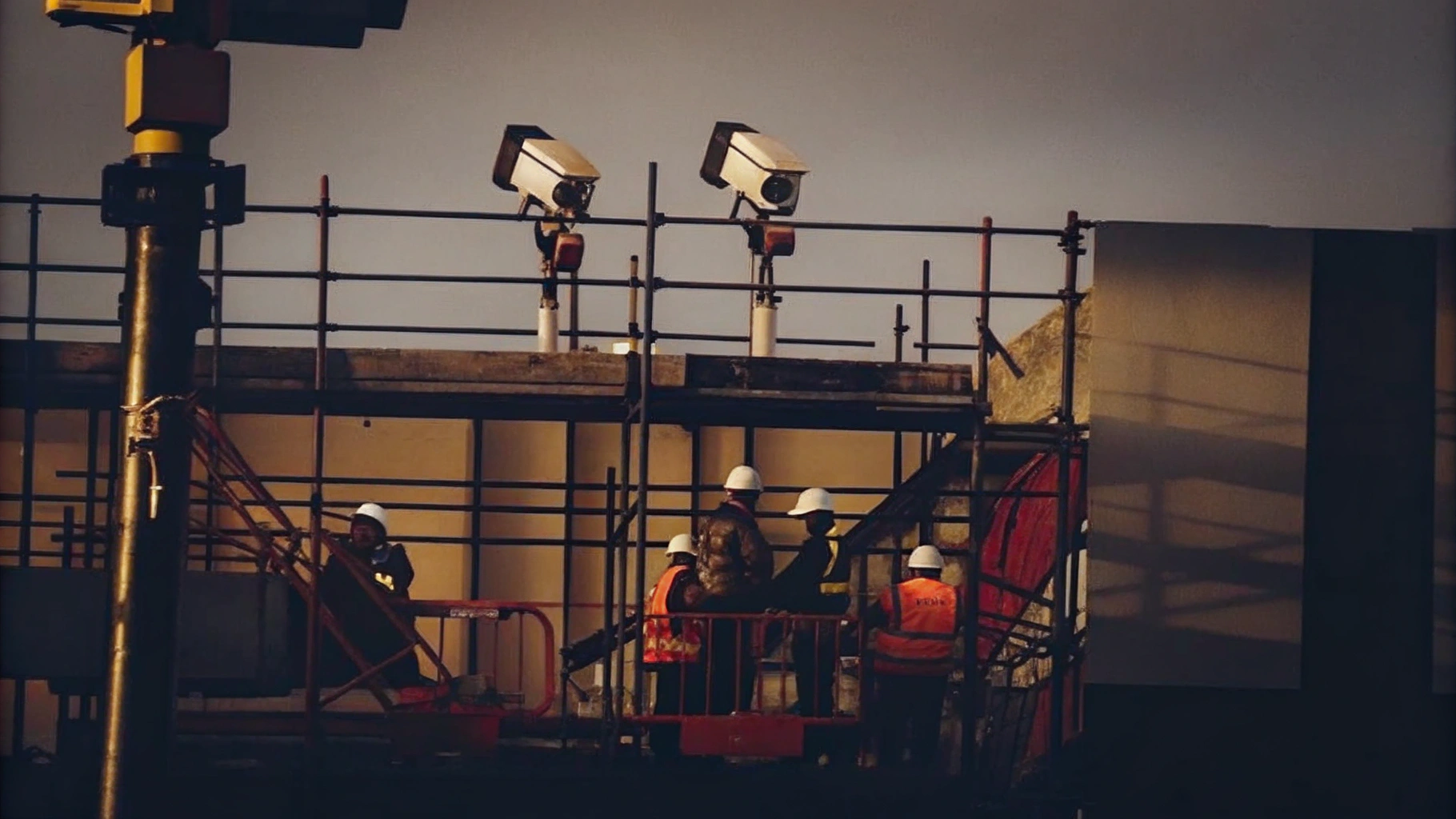
Predictive Threat Detection: Proactively Managing Security Risks
AI CCTV setups utilise predictive analytics to proactively detect possible threats at building sites. By analysing historical data and real-time patterns, AI CCTV systems can identify unusual behaviours and alert security personnel to suspicious activities, facilitating timely intervention. This proactive approach is essential for maintaining a secure building environment. For instance, AI analytics can pinpoint unsecured scaffolding or PPE violations, significantly reducing the risk of accidents and enhancing overall site safety.
Organisations that adopt predictive threat detection strategies have reported a marked decrease in incident rates, showcasing the effectiveness of these advanced technologies in safeguarding construction projects. The incorporation of in threat detection not only enhances response times but also allows teams to focus on strategic safety measures, ultimately promoting a safer work environment.
Furthermore, integrating Hostile Vehicle Mitigation (HVM) strategies into planning can further improve site safety. By recognising the risks presented by vehicles and applying physical measures like barriers and bollards, building sites can avert possible vehicle-related threats. Priority First’s knowledge in customised protective solutions guarantees that building sites are not only overseen efficiently but also structured to withstand various dangers, forming a thorough protective strategy that emphasises both safety and operational effectiveness.
For instance, during the construction of a luxury hotel on Sloane Street, Priority First offered construction protection and logistics management, assisting in maintaining the site safe and organised.
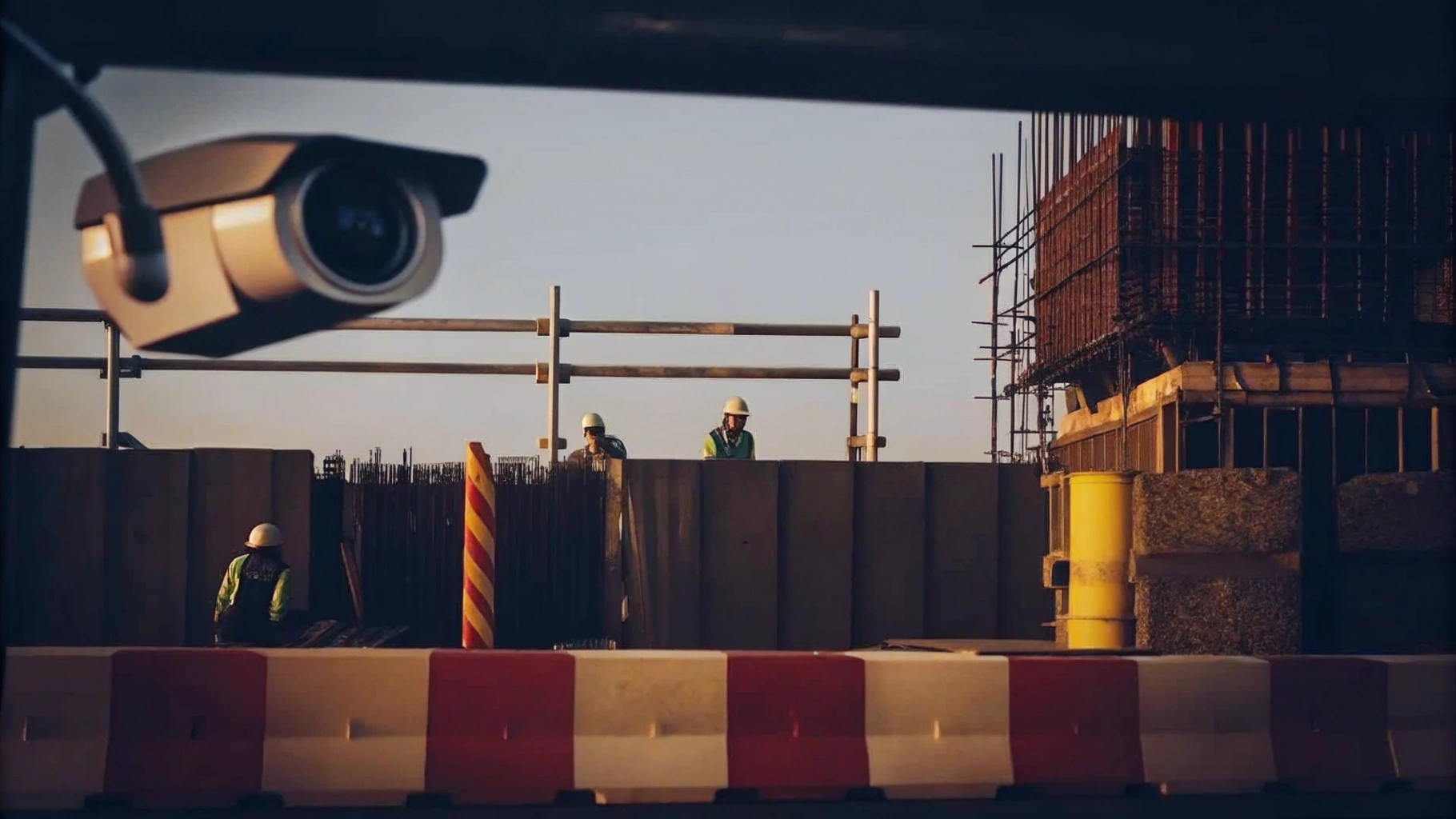
Rapid Response Capabilities: Minimizing Incident Impact
AI surveillance technologies are a crucial response to security incidents, enabling teams to react immediately and significantly mitigate the impact of breaches. These advanced systems automatically alert monitoring staff and law enforcement, ensuring that suspicious activities are addressed without delay. This rapid response capability is vital for protecting valuable assets and creating a secure working environment. For example, AI-powered surveillance towers have contributed to a notable reduction in property crime, with reports indicating a 34% decrease in the UK in 2021.
Moreover, the integration of smart video analytics allows these systems to differentiate between genuine threats and benign activities, thereby reducing false alarms. This capability enables response teams to focus their efforts on real concerns. As industry professionals point out, the ability to respond swiftly not only protects assets but also enhances overall site safety. Thus, AI CCTV emerges as an indispensable resource for safeguarding construction sites.
Furthermore, incorporating Hostile Vehicle Mitigation (HVM) strategies into your security framework can bolster defences against vehicle-related threats. HVM encompasses physical measures such as barriers and bollards, which, when combined with AI CCTV, create a robust defence against potential dangers. To effectively implement AI surveillance systems, site managers should consider:
- Conducting a thorough risk assessment
- Integrating these systems with existing protective measures
- Ensuring that personnel are adequately trained to utilise the technology effectively
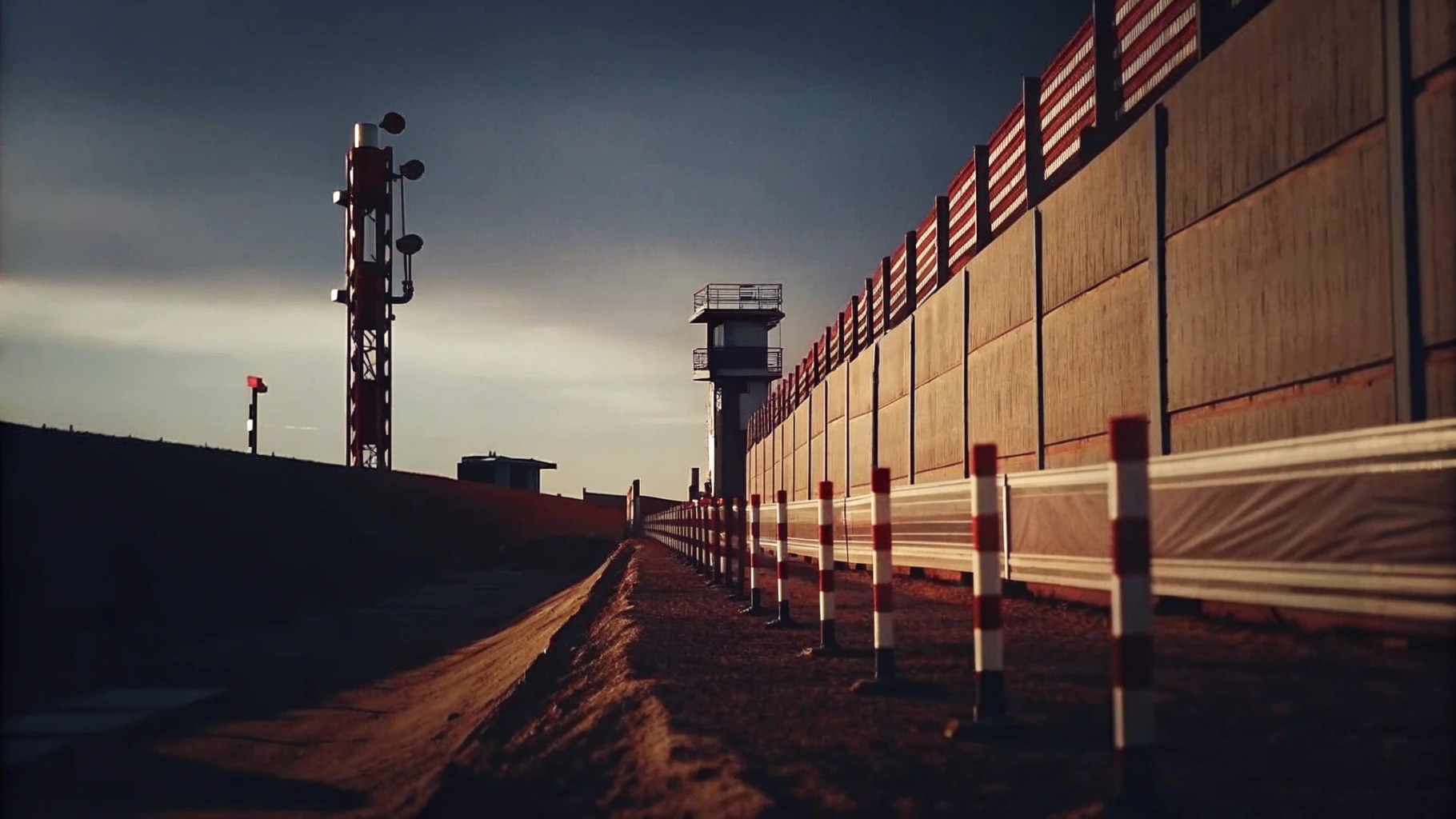
Enhanced Surveillance Accuracy: Reducing False Alarms
AI CCTV technologies enhance surveillance precision by utilising advanced algorithms that effectively differentiate between genuine threats and false alarms. This capability is particularly crucial on construction sites, where unnecessary alerts can disrupt operations and divert personnel from real safety concerns. By significantly reducing false alarms, these technologies not only streamline protective measures but also help maintain operational efficiency.
In 2025, the construction industry is expected to confront escalating theft challenges, with over 11,000 incidents reported annually. This statistic underscores the urgent need for . Technology experts assert that AI CCTV systems can analyse hours of video footage in seconds, facilitating the swift identification of suspicious activities. For instance, AI surveillance towers employ machine learning to adapt to typical site activities, thereby minimising false alarms by issuing alerts only for atypical behaviour.
This proactive approach not only enhances safety but also ensures that construction sites can operate smoothly, free from the disruptions caused by frequent false alarms. The lesson is clear: investing in advanced security solutions is not merely a precaution but a critical component of maintaining business continuity in the construction sector.
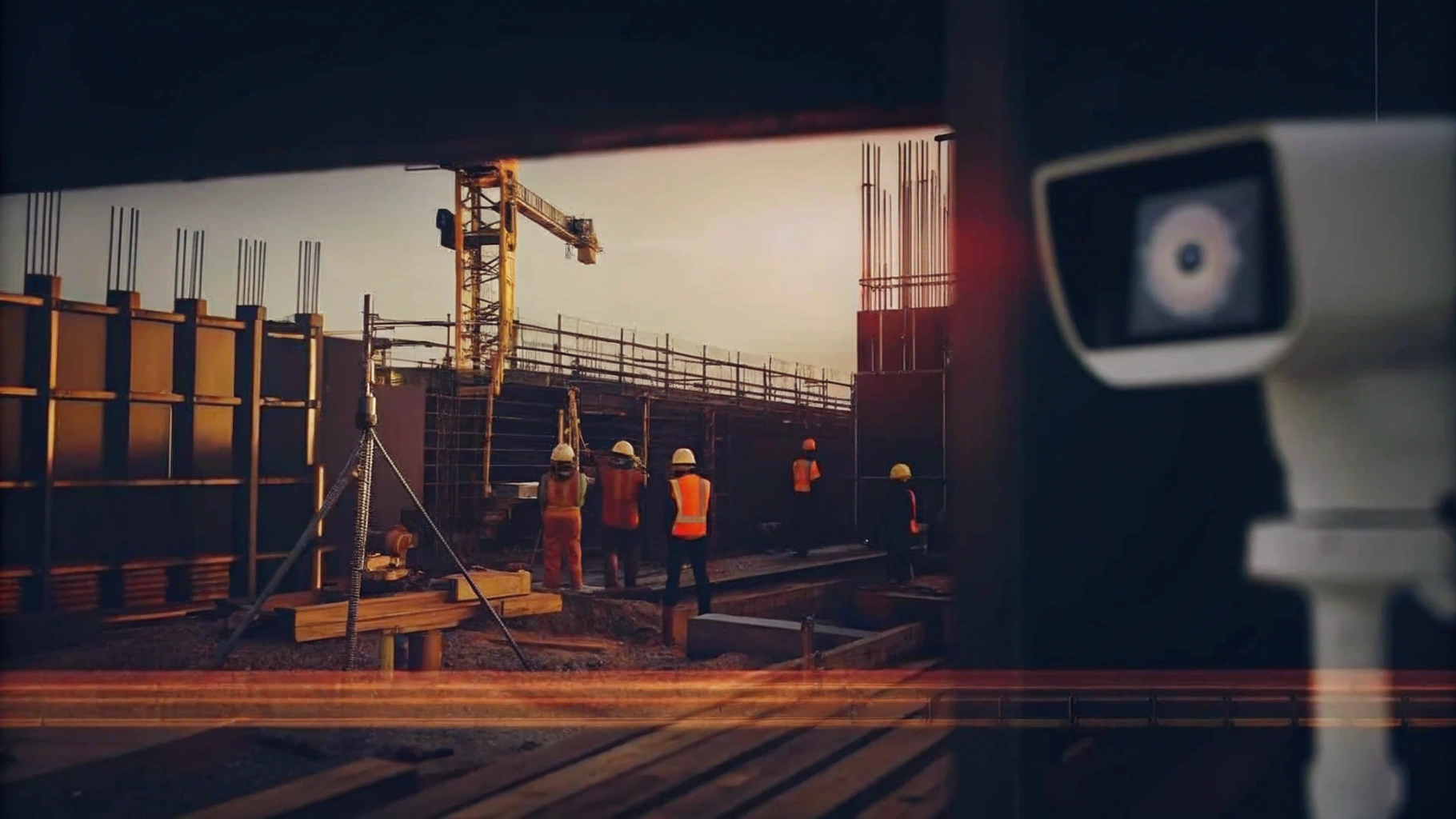
Seamless Integration: AI CCTV with Existing Security Systems
Incorporating AI CCTV into current monitoring systems represents a significant advancement in site protection, enhancing functionality without necessitating a complete overhaul. This integration allows construction sites to leverage their existing infrastructure, resulting in a more robust framework that merges traditional methods with cutting-edge technology such as AI CCTV. Consequently, sites can markedly improve their protective measures while managing costs effectively.
For instance, Priority First's video monitoring service provides continuous observation through strategically placed cameras, facilitating real-time threat identification and immediate alerts. This integration not only boosts operational efficiency but also amplifies the .
The combination of established security techniques, such as PTZ cameras and thermal surveillance equipment, with AI CCTV technology ensures a proactive stance against potential threats, ultimately safeguarding valuable assets and personnel.
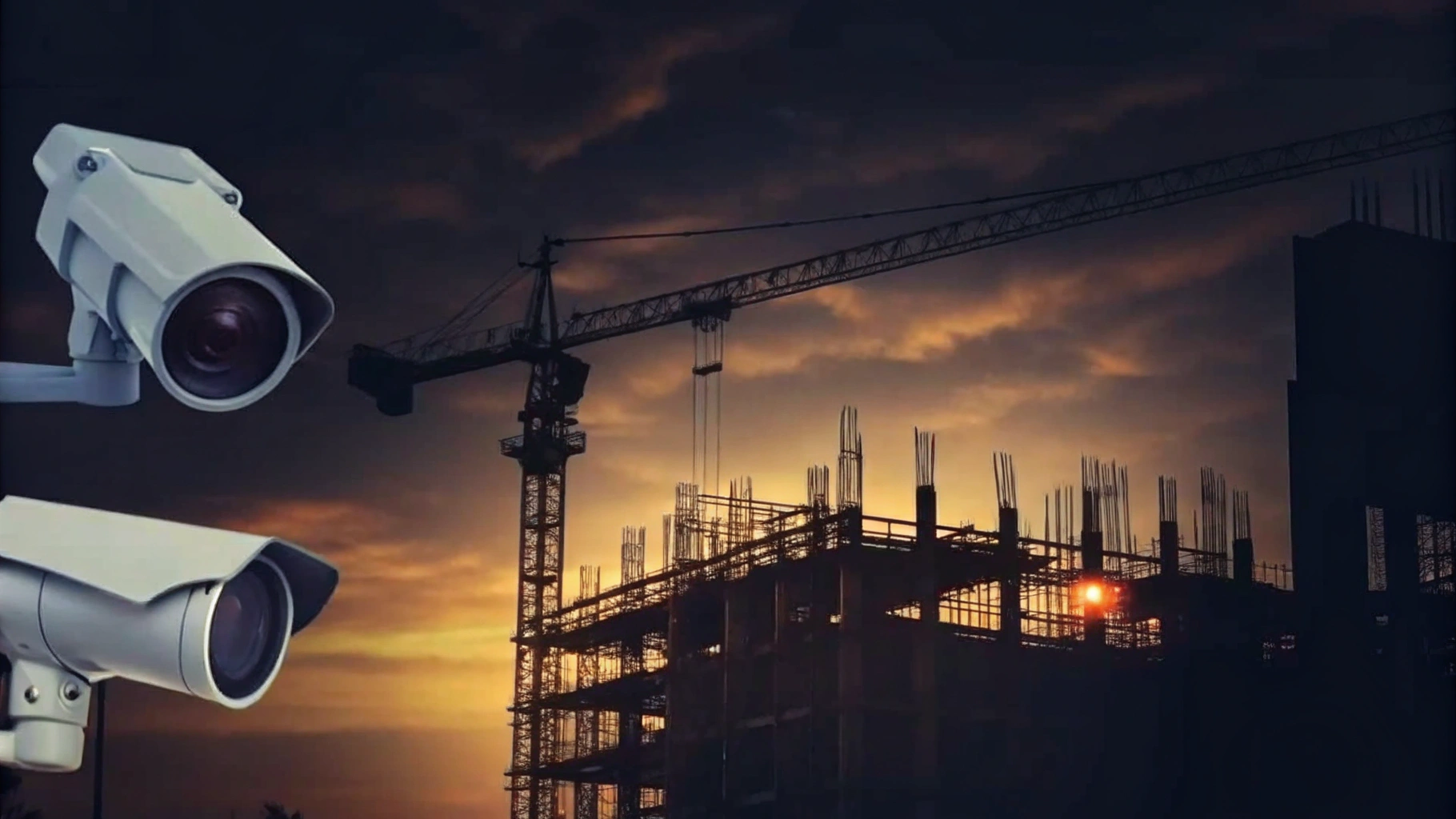
Cost-Effectiveness: Maximizing Security Investment
Investing in AI CCTV surveillance technology is a cost-effective strategy for building sites. Theft and vandalism together cost the UK construction industry approximately £800 million annually. By implementing AI CCTV for surveillance, businesses can realise significant savings in potential losses. For example, during the development of a multi-use complex in Chelsea, Priority First's tailored CCTV remote surveillance solution ensured zero break-ins within weeks, illustrating the immediate financial benefits of such investments.
The efficiency of AI CCTV monitoring reduces the need for extensive manpower, which further decreases operational costs. Traditional security measures often require substantial human resources, which can be costly; however, streamline processes and enhance safety without necessitating the same level of staffing. This transition not only improves the return on investment for security expenditures but also allows project managers to focus on core operations, reassured that their assets are secure.
Financial analysts note that the incorporation of AI CCTV technology into security systems can lead to a marked reduction in operational costs. Companies employing AI surveillance have reported savings of up to £80,000 in claim-related losses by swiftly countering fraudulent injury claims. These financial advantages underscore the importance of adopting AI CCTV solutions in the construction sector. Furthermore, Priority First offers round-the-clock surveillance monitoring services, ensuring ongoing protection and fostering a sense of security among workers, which alleviates anxiety and cultivates a safer working environment.
Data Protection: Ensuring Privacy in AI Surveillance
AI CCTV setups are designed to prioritise data protection, ensuring that surveillance practises align with current privacy regulations. By incorporating advanced features such as data encryption and stringent access controls, these platforms safeguard sensitive information while providing robust monitoring capabilities through AI CCTV. This careful balance between safety and privacy is vital for maintaining trust among employees and stakeholders on construction sites.
In 2025, compliance with privacy regulations will be increasingly critical as organisations face heightened scrutiny regarding their surveillance practises. Statistics indicate that 90.6% of organisations claim to have effective information management programmes, yet only 30.3% have implemented effective data classification systems. This highlights a significant gap in operational preparedness.
Privacy advocates emphasise the necessity of adhering to surveillance regulations, asserting that organisations must ensure transparency and accountability in their monitoring practises. As the global data privacy software market is anticipated to expand considerably, organisations are recognising the importance of investing in technologies that not only enhance protection but also uphold privacy standards. This proactive strategy reduces and fosters a culture of trust and compliance within the building sector.
Scalability: Adapting AI CCTV to Project Needs
AI CCTV surveillance systems demonstrate remarkable scalability, enabling construction sites to tailor their protective measures according to project size and complexity. For instance, large-scale developments can deploy extensive networks of intelligent cameras, while smaller sites can opt for compact, mobile CCTV Towers that provide near-360° surveillance. This adaptability guarantees effective monitoring across all areas, irrespective of site dimensions.
Customization options abound, allowing teams to adjust parameters based on specific risks associated with different environments. AI algorithms can be refined to identify unique behavioural patterns on-site, thus enhancing the detection of potential threats. Industry specialists underscore that integrating AI CCTV technology transforms traditional surveillance into proactive protective measures, capable of anticipating and responding to events in real-time.
In 2021, the introduction of AI CCTV technology resulted in a notable decline in crime rates, with reports indicating a 34% reduction in property crime and a 32% decrease in vehicle crime throughout the UK. This underscores the effectiveness of bespoke AI CCTV monitoring in across diverse building environments.
As construction projects advance in 2025, the ability to adapt AI surveillance systems to meet specific project needs will be critical. By leveraging advanced analytics and machine learning, project managers can ensure that their safety infrastructure remains robust and responsive, ultimately safeguarding their investments and sustaining operational efficiency.

Future Potential: Embracing AI CCTV for Long-Term Security Solutions
The outlook for AI surveillance systems in building site protection is notably positive, driven by continuous technological advancements that significantly enhance operational capabilities. As AI technology progresses, these systems are increasingly adept at identifying threats, processing extensive data, and providing actionable insights. Experts forecast that by 2025, AI surveillance will feature sophisticated capabilities such as real-time behavioural analysis and predictive risk modelling, enabling proactive threat management. Embracing AI surveillance today allows building sites to leverage these innovations, ensuring sustained safety and operational efficiency.
Companies that have adopted AI-driven surveillance, such as Priority First, report significant decreases in theft and vandalism, along with enhanced compliance with safety regulations. Priority First's comprehensive video surveillance service ensures immediate threat detection and seamless integration with existing safety systems, providing site managers with continuous monitoring to maintain consistent security. These enduring benefits highlight the importance for construction managers to implement , shifting security from a reactive measure to a proactive strategy that enhances overall site management and productivity.
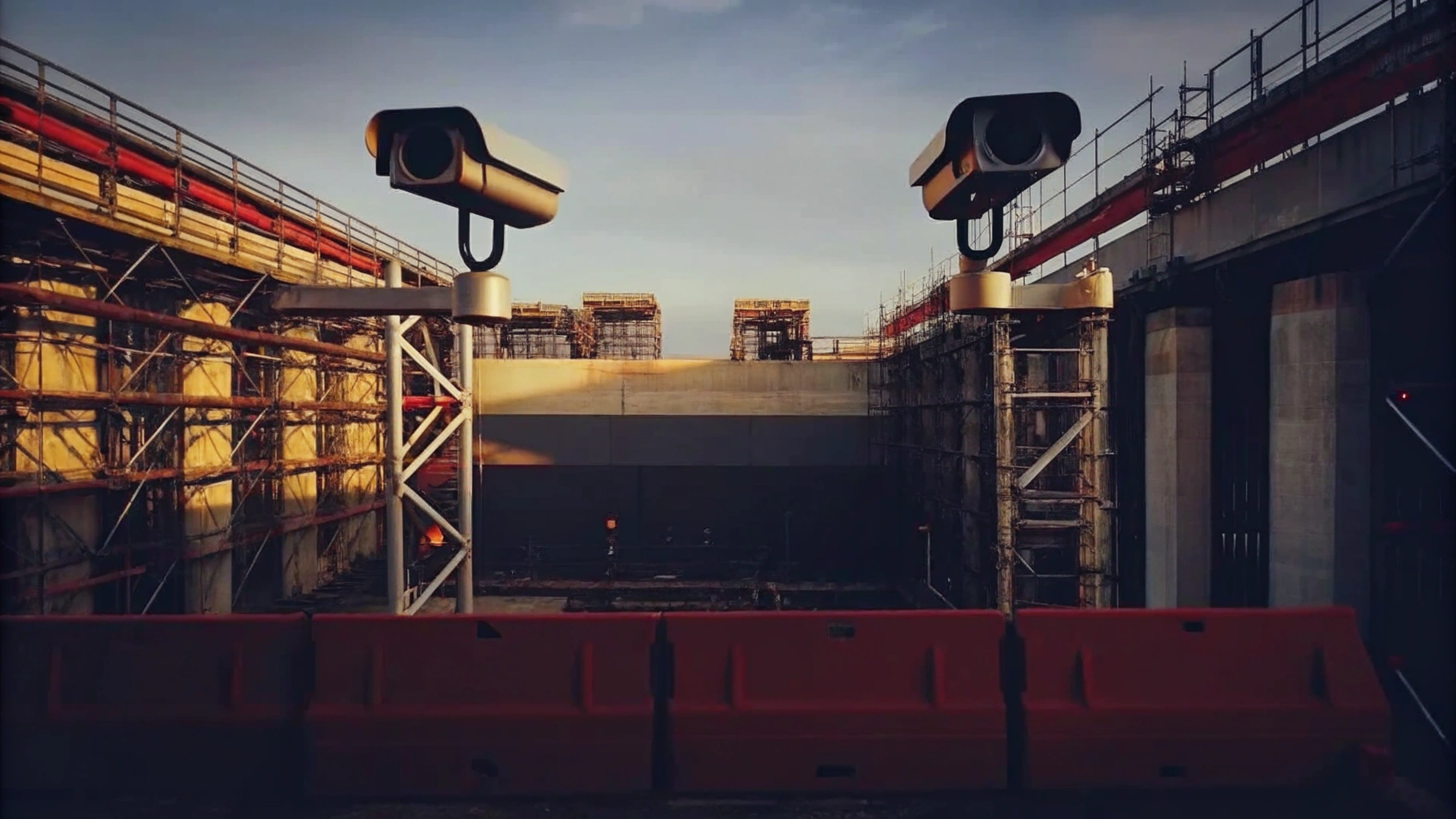
Conclusion
The integration of AI CCTV technology into construction site security signifies a notable shift towards improved safety and operational efficiency. By utilising advanced surveillance capabilities, construction sites can proactively identify and mitigate risks, thereby ensuring a safer environment for workers and safeguarding valuable assets. The capacity of AI systems to monitor in real-time, detect unsafe behaviours, and facilitate rapid responses underscores the essential role technology plays in contemporary construction management.
Key benefits of AI CCTV include:
- Real-time monitoring
- Predictive threat detection
- Enhanced surveillance accuracy
These systems not only diminish the likelihood of incidents but also ensure compliance with safety regulations, ultimately cultivating a culture of safety on construction sites. Moreover, the cost-effectiveness of AI surveillance solutions highlights their value, as they reduce losses associated with theft and accidents while optimising resource allocation.
As the construction industry evolves, the adoption of AI CCTV technology will be crucial for project managers focused on enhancing site security and operational resilience. The future of construction safety hinges on the ability to adapt and integrate innovative technologies that address current challenges and anticipate future risks. Investing in AI CCTV is not merely a strategic decision; it represents a commitment to safeguarding lives, assets, and the overall integrity of construction projects.
Frequently Asked Questions
What is the primary function of AI CCTV technology in construction sites?
AI CCTV technology enhances safety on construction sites by providing real-time monitoring, documenting activities, and analysing behaviours to identify potential threats.
How does AI CCTV improve safety compliance on construction sites?
AI CCTV systems autonomously monitor live video feeds to identify hazardous practises and unauthorised entries, instantly alerting operators to potential hazards, such as workers not wearing personal protective equipment (PPE).
Can AI CCTV systems prevent incidents before they occur?
Yes, AI CCTV systems can detect unsafe behaviours, such as employees failing to wear PPE, and quickly notify safety personnel, thereby preventing incidents before they happen.
What are some real-world applications of AI CCTV in construction security?
An example is BNI Coal, which used the WingtraOne drone for surveying, improving operational efficiency and safety by reducing the need for surveyors to enter hazardous areas.
How does predictive threat detection work with AI CCTV?
Predictive threat detection utilises historical data and real-time patterns to identify unusual behaviours, enabling AI CCTV systems to alert security personnel to suspicious activities for timely intervention.
What impact does AI CCTV have on incident rates in construction projects?
Organisations that implement AI CCTV with predictive threat detection strategies have reported a marked decrease in incident rates, showcasing the technology's effectiveness in enhancing safety.
How does AI CCTV contribute to managing crowd density on construction sites?
AI CCTV systems can track crowd density in real time, aiding in the management of safety risks associated with overcrowding on site.
What are the benefits of integrating AI technology with existing security infrastructure?
The integration allows for seamless monitoring without the need for a complete system overhaul, enhancing operational efficiency and compliance with safety protocols.
Why is AI technology considered essential for the construction industry moving forward?
Experts emphasise that leveraging AI technology is crucial for safeguarding lives, promoting industry advancement, and maintaining safety standards in construction, making it a vital investment for project managers.


